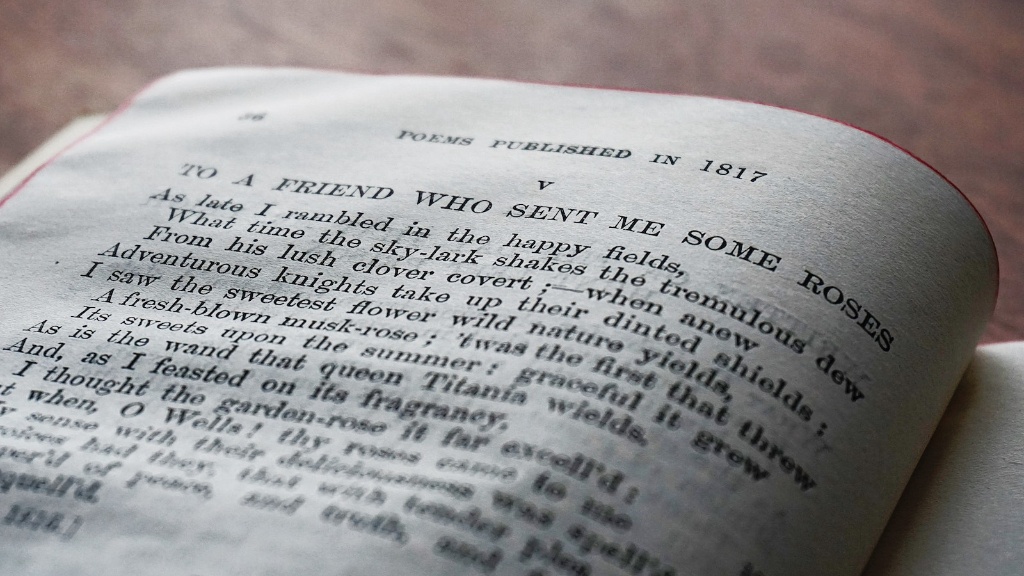Definition of Narrative Poetry
Narrative poetry is a popular form of poetic expression wherein a story is told. Generally, it is a long poem, usually consisting of several stanzas, that narrates an incident or recounts a story, often in a first-person or third-person point of view. It usually contains elements such as suspense, characterization, plot, dialogue, and various scenes that form a vivid and lifelike narrative. Narrative poetry often uses rhyme and alliteration, as well as elements of epic poetry, chorus, and extended metaphor.
History and Development of Narrative Poetry
Narrative poetry dates back to the ancient times, when Greek and Roman poets told stories about the gods in epic poems such as the Iliad and the Aeneid. In the Middle Ages, courtly love poems such as the Romance of the Rose and Le Morte d’Arthur were penned. These were followed by the classic narrative poetry of the Renaissance, such as William Shakespeare’s Venus and Adonis and Christopher Marlowe’s Hero and Leander. During the Romantic period, narrative poetry flourished, with the publication of works such as Samuel Taylor Coleridge’s The Rime of the Ancient Mariner, William Wordsworth’s The Prelude, and John Keats’s Endymion.
Characteristics of Narrative Poetry
Narrative poetry typically follows certain patterns in terms of its structure, content, and form. It is often written in verse form, with a simple narrative structure, in a chronological order. There is usually a single protagonist whose actions and emotions form the basis of the poem, alongside the audience’s experience of them. Common features of narrative poetry include the use of rhyme, rhythm, and alliteration, as tools for creating a poetic landscape and atmosphere. The poem also contains symbolic elements, imagery, and metaphors that convey the message of the poem in a powerful way.
Examples of Narrative Poetry
An example of narrative poetry is “The Rime of the Ancient Mariner” by Samuel Taylor Coleridge. This poem tells the story of an old mariner who is cursed by a supernatural force. It makes use of various literary techniques and symbolic elements to convey the sense of the supernatural and of the struggle of a human soul against an all-powerful force. Another example is “Annabel Lee” by Edgar Allan Poe, which tells the story of a narrator’s love for his dead beloved and his struggles to come to terms with her death.
Benefits of Narrative Poetry
Narrative poetry is an integral part of literature as it enhances readers’ understanding of the narrative. It can be an effective tool for expressing emotions and ideas that cannot be easily expressed in prose. By utilizing creative, imaginative language and imagery, it engages readers in an exploration of their imagination and consciousness. Additionally, narrative poetry can provide therapeutic benefits, allowing readers to express their feelings, contemplate their own experiences, and reflect on their lives.
Purpose of Narrative Poetry
The purpose of narrative poetry is to tell a story, provide insight, and convey messages in an emotionally powerful way. It is a form of expression that allows readers to identify with the story’s protagonist and explore the poem’s themes. Narrative poems also explore themes of life, love, death, and loss, as well as the human experience. Through its vivid imagery and symbolic elements, it can evoke powerful emotions in the reader and give them a greater appreciation of literature and of their own lives.
Contemporary Narrative Poetry
Contemporary narrative poetry is used in variety of mediums, such as spoken word poetry, rap, music, and literature. Poets such as Maya Angelou, Robert Frost, and Sylvia Plath have made a great contribution to the genre of narrative poetry, as have contemporary poets such as Billy Collins, Mary Oliver, and T.S. Eliot.
Modern Relevance of Narrative Poetry
Narrative poetry is still popular and relevant in today’s society, with a large number of poets writing in the genre. It is popular among teenagers and young adults, who use it to express their experiences and emotions. Additionally, narrative poetry can be a powerful tool for social change and protest, as it can be used to give a voice to the marginalised and to challenge societal issues.
Conclusion
Narrative poetry is an important part of literature as it allows readers to experience a story, create powerful imagery and explore emotions and themes through its creative language. Through its symbolism and vivid imagery, it can evoke powerful emotions in the reader and open their minds to a new world of literature. Although narrative poetry has been around for many centuries, it is still popular and relevant in today’s society and is used as an effective tool for expressing feelings, expressing protest and creating social change.


